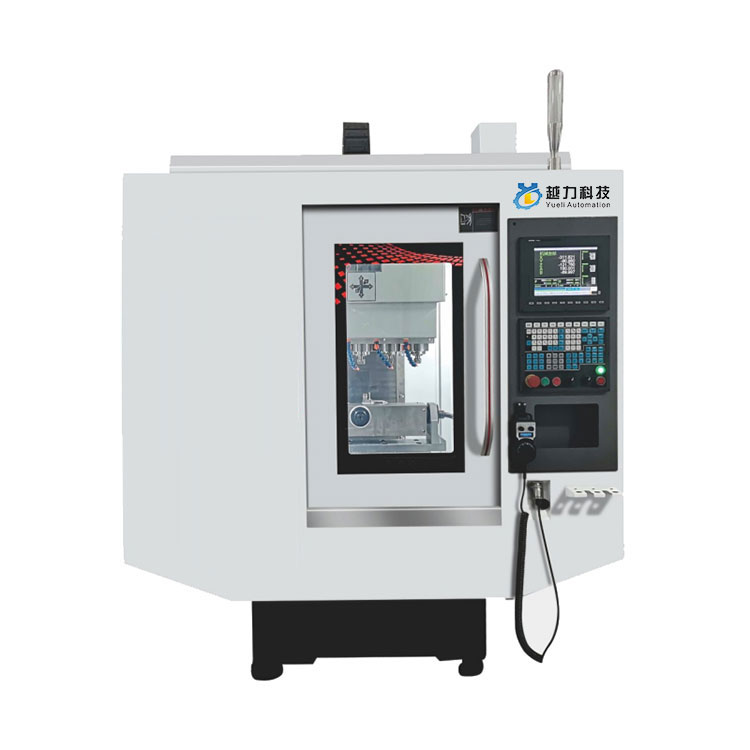The Ultimate Q&A Guide to Horizontal Machining Centers
2025-01-14
What Is a Horizontal Machining Center (HMC)?
A Horizontal Machining Center (HMC) is a type of computer numerically controlled (CNC) machine used for precision machining. Unlike vertical machining centers (VMC), the spindle on a horizontal machining center is positioned horizontally. This orientation allows for better chip removal, increased productivity, and the ability to work on larger or more complex parts. HMCs are commonly used for operations such as milling, drilling, boring, and tapping.
What Are the Key Benefits of Using a Horizontal Machining Center?
- Improved Chip Removal: The horizontal orientation allows gravity to assist in removing chips, which prevents clogs and improves machining efficiency.
- Increased Productivity: Multiple sides of a part can be machined simultaneously with a tombstone or fixture, reducing the need for manual repositioning.
- Better Stability: The machine’s structure and horizontal spindle design provide superior rigidity and stability for high-precision work.
- Ideal for Large Parts: HMCs are suitable for machining larger components that require multiple operations without needing to re-fixture the workpiece.
- Automation Ready: Many HMCs are equipped with automation options, making them ideal for high-volume, automated production.
What Types of Materials Can Be Machined on a Horizontal Machining Center?
Horizontal machining centers are versatile and can handle a wide variety of materials, including:
- Metals: Steel, aluminum, titanium, brass, and copper.
- Composites: Carbon fiber, fiberglass, and other advanced composite materials.
- Plastics: Engineering plastics, such as PEEK or Delrin.
- Hard Materials: HMCs are well-suited for high-hardness materials such as tool steel and hardened alloys due to their rigidity and stability.
What Are the Different Types of Horizontal Machining Centers?
Horizontal machining centers come in several configurations:
- Single Pallet HMC: Equipped with one rotating pallet that holds the workpiece. Suitable for medium-sized production runs.
- Twin Pallet HMC: Features two pallets that allow one to be machined while the other is being loaded or unloaded, reducing downtime.
- Rotary Table HMC: Incorporates a rotary table to enable continuous machining of parts on multiple sides without repositioning.
- Multi-axis HMC: Advanced versions with additional axes (often up to 5 axes) that allow for complex geometries and parts to be machined in a single setup.
How Does a Horizontal Machining Center Work?
The operation of a horizontal machining center involves several steps:
1. Setup: The workpiece is securely mounted on the machine’s pallet or fixture.
2. Machining Process: The CNC controller sends instructions to the machine, directing it to perform milling, drilling, or tapping operations on the workpiece.
3. Chip Removal: The horizontal orientation of the spindle allows chips to fall freely away from the work area, preventing buildup.
4. Multiple Operations: The machine can perform multiple operations without needing to reposition the workpiece, increasing accuracy and efficiency.
What Are the Key Components of a Horizontal Machining Center?
- Spindle: The horizontally oriented spindle drives the cutting tools.
- Pallet: Holds the workpiece securely in place while it is being machined.
- Tool Changer: Automatically changes cutting tools during the machining process for various operations.
- CNC Control Panel: Used to program and monitor the machine’s operation, ensuring precision and accuracy.
- Coolant System: Provides lubrication and cooling to the cutting tools and workpiece during machining.
How Do I Choose the Right Horizontal Machining Center?
Consider the following factors when selecting a horizontal machining center:
- Workpiece Size: Choose a machine with a large enough table or pallet to accommodate your workpieces.
- Number of Axes: For more complex machining tasks, consider a machine with 4 or 5 axes.
- Automation Needs: If you require high-volume production, look for a machine with pallet changers or integration with robotic systems.
- Material Compatibility: Ensure the machine is capable of machining the materials you need with appropriate tooling.
- Precision Requirements: Choose a machine with the appropriate level of precision for your manufacturing needs.
What Are the Common Applications of Horizontal Machining Centers?
Horizontal machining centers are widely used across various industries:
- Aerospace: For machining complex and large components like turbine blades and engine parts.
- Automotive: For manufacturing engine components, transmission parts, and chassis elements.
- Medical Device Manufacturing: For producing surgical tools, implants, and devices with tight tolerances.
- Defense: For making components used in military vehicles, weapons systems, and avionics.
- Energy: For machining parts used in oil and gas, renewable energy systems, and power plants.
How Do I Maintain a Horizontal Machining Center?
Proper maintenance is essential for maximizing the lifespan and performance of your HMC:
- Regular Lubrication: Ensure the machine’s moving parts and spindle are well-lubricated.
- Coolant Maintenance: Keep the coolant system clean and free from contaminants.
- Tool Inspection: Check cutting tools for wear and replace them as necessary.
- Machine Calibration: Periodically calibrate the machine to ensure precise operation and avoid dimensional drift.
- Routine Cleaning: Keep the machine free of dust, chips, and debris that could affect performance.
What Are the Costs Associated with Horizontal Machining Centers?
The cost of a horizontal machining center varies widely depending on factors such as:
- Machine Size and Features: Larger machines with more axes and advanced capabilities tend to be more expensive.
- Brand: Established brands with proven reliability typically command higher prices.
- Automation Features: Machines with automation, such as pallet changers or robotic arms, can add to the overall cost.
- Material Handling and Setup: The complexity of your production setup may influence the overall investment.
Conclusion
Horizontal Machining Centers (HMCs) are powerful, versatile machines that play a crucial role in modern manufacturing. Their ability to efficiently machine large, complex parts with multiple operations in a single setup makes them indispensable in industries like aerospace, automotive, and medical device production. By understanding their features, benefits, and proper maintenance, manufacturers can make the most of their HMC investment, improving productivity and part quality.



